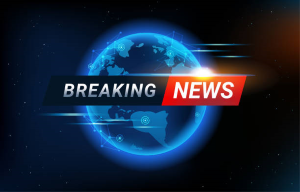What does Trump really want from Canada and Mexico? It may come down to oil security and bringing both countries ‘under the US’s thumb’

Donald Trump and Canadian Prime Minister of Canada Justin Trudeau.
-
President Donald Trump gave markets whiplash after he announced steep tariffs on Canada and Mexico, then abruptly agreed to a one-month pause for both countries. But the long-term strategy may be about creating a regional security zone with energy at the center, a market veteran said.
Financial markets have been left wondering what President Donald Trump's ultimate goal is for his tariffs on Canada and Mexico after the past week's whiplash.
Last Saturday, he announced tariffs on the two countries and China, demanding more cooperation on stopping illegal drugs. But by Monday, he agreed to one-month pauses on duties for America's northern and southern neighbors after they pledged more border security, while a 10% levy on Chinese imports went into effect.
https://www.amazon.com/Africircle-AfriPrime/dp/B0D2M3F2JT
Adding more confusion, Trump also threatened Europe with tariffs, then later suspended tariffs on low-cost goods from China, and warned on Friday that he plans to unveil reciprocal tariffs against trading partners around the world.
So what's going on? According to a note Tuesday from Yardeni Research, the key to understanding his approach is energy and national security.
"For Trump to secure the US’s energy future, he needs the Western Hemisphere to function as a coherent energy bloc," market veteran Ed Yardeni wrote. "This means both a reliable, unimpeded flow of oil and natural resources from Canada and a safer Mexico. And that means both countries under the US’s thumb."
While the shale boom has helped the US become the world's biggest oil producer in recent years, Canada and Mexico are still key sources of crude. Midwest refineries in particular rely on Canadian oil, and Gulf Coast refineries use Mexican oil.
But Canada is by far is an "indispensable partner" as it exports about 3.9 million barrels per day to the US, compared to Mexico’s 397,000 barrels, Yardeni said.
Tariffs on Canada may appear at first as a protectionist move, but they’re actually part of a negotiating tactic to gain greater control over Canadian energy, he explained, adding that Trump's desire to make Canada the 51st state isn't just idle talk.
"The tariffs are more than a mere trade measure; they are part of a larger bargaining strategy to bring Canada closer into the US orbit, especially when it comes to energy resources," Yardeni wrote. "Posturing aside, a North American security zone appears to be taking shape as of Monday afternoon."
That's as Canadian Prime Minister Justin Trudeau and Mexican President Claudia Sheinbaum seem to have accepted the reality that refusing the US risks dire economic consequences, he said.
The White House didn't immediately respond to a request for comment.
In Yardeni's view, the inspiration for this strategy may be Heritage Foundation’s Project 2025, which calls for a hemisphere-centered approach to industry and energy.
That includes shifting manufacturing away from countries like China and toward Central and South America as well as working with Mexico, Canada and other nations to reduce dependence on "distant and manipulable sources of fossil fuels," according to Project 2025.
That all tracks with Yardeni, who thinks Trump wants to reclaim US sovereignty over energy and push back against the destabilizing influence of outsiders like China.
"Reshaping US relations with its North American neighbors isn’t about dollars and cents; it’s about ensuring that the US holds the reins on global energy production and security—effecting a geopolitical recalibration," he said.
To be sure, Trump is known to be fickle and may eventually move on to a different policy priority. A separate note from Capital Economics on Wednesday quipped that he is still "reliably unreliable" as he will always be willing to cut deals.
But the risk remains, and Capital Economics chief North American economist Paul Ashworth warned of the possibility of a "rolling tariff threat" with repeated delays as negotiations drag on this year.
For now, he sees a 10% universal levy with China seeing duties as high as 60%, but that could be too pessimistic if Trump reaches a grand bargain with Beijing.
"At the same time, however, even allowing for Trump’s U-turn, we have become more worried over the past week that we may have been overly optimistic in our assumption that other countries would not be targeted for specific tariffs," Ashworth added.
- Questions and Answers
- Opinion
- Motivational and Inspiring Story
- Technology
- Live and Let live
- Focus
- Geopolitics
- Military-Arms/Equipment
- الحماية
- Economy/Economic
- Beasts of Nations
- Machine Tools-The “Mother Industry”
- Art
- Causes
- Crafts
- Dance
- Drinks
- Film/Movie
- Fitness
- Food
- الألعاب
- Gardening
- Health
- الرئيسية
- Literature
- Music
- Networking
- أخرى
- Party
- Religion
- Shopping
- Sports
- Theater
- Health and Wellness
- News
- Culture


